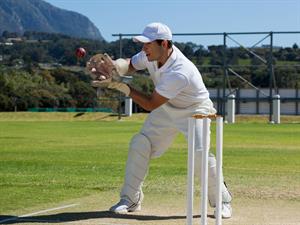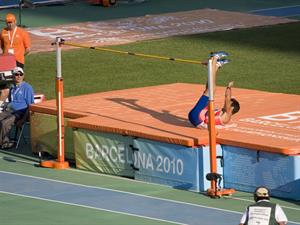PDF chapter test TRY NOW
1. A fielder in the cricket ground pulls his hands backwards with the fast-moving cricket ball during the action of catching. By this action, the fielder prolongs the time to decrease the velocity of the fast-moving ball to zero. Hence, the impact of catching the fast-moving ball is reduced by decreasing the acceleration of the ball.

If the fielder suddenly stops the ball, its high velocity drastically decreases to zero in a very short period.
As a result, the rate of change of momentum will be large, and thus, a large force should be exerted for taking the catch that may hurt the fielder's palm.
2. Athletes in high jump sporting events are forced to land on a cushioned or a sand bed. This is done to prolong the time it takes for the athlete's fall to come to a halt after completing the jump. An increase in the time of fall reduces the force by lowering the rate of change of momentum.

3. With the same technique, a karate player breaks an ice slab with a powerful single blow.

From the second law's mathematical expression, the first law of motion can be easily stated.
When the force \(F\) is zero, the final velocity is equal to the initial velocity (\(v =u\)), whatever the time \(t\) may be.
Hence, it implies that the object will continue its motion with uniform velocity, \(u\) throughout the time, \(t\). If \(u\) is zero, then \(v\) will also be zero, keeping the object at rest.
Reference:
https://image.shutterstock.com/z/stock-photo-barcelona-july-european-athletics-championships-barcelona-decathlon-high-jump-in-the-58176451.jpg - Photography by Natursports
